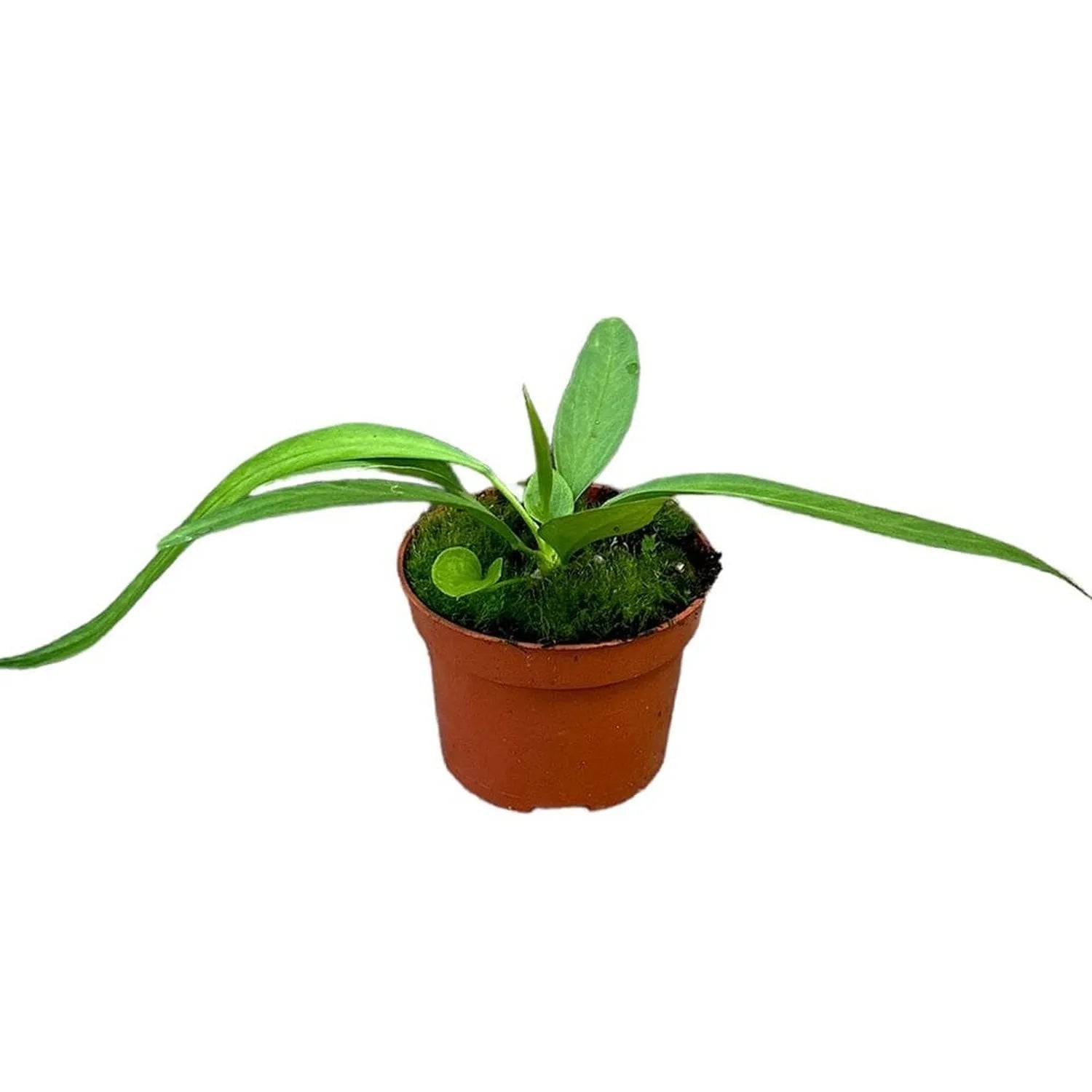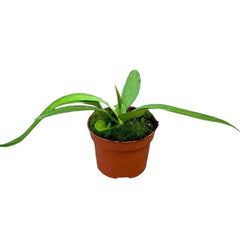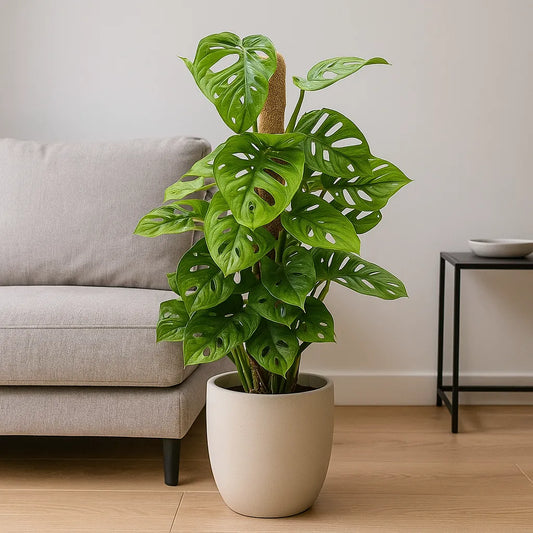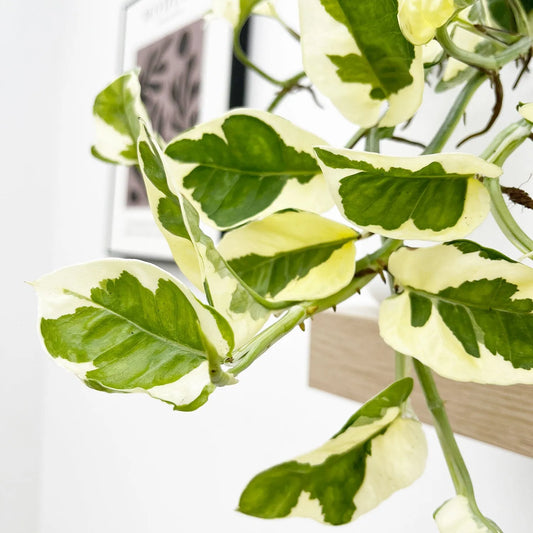

15 cm Anthurium Vittarifolium House Plant 10,5 cm Pot
- £49.99
£54.99- £49.99
- Unit price
- per
Live Delivery Guarantee
At Plants for all Seasons, we stand behind the quality and vitality of every plant we deliver, which is why we proudly offer a Live Delivery Guarantee. This commitment means that we guarantee your plants will arrive at your doorstep in healthy, thriving condition. We understand the importance of receiving your plants in the best possible state, ready to enhance your space from the moment they arrive. With Plants for all Seasons's Live Delivery Guarantee, you can shop with complete peace of mind, knowing that your green investments are protected from our nursery to your doorstep.
30 Days Returns
Due to the sensitive and breakable nature of our products, it's understandable that damages may occur despite our meticulous packaging methods. If you find that your plant or pot has arrived in a less than satisfactory condition, please reach out to us at hello@plantsforallseasons.co.uk within a month of your delivery date. When contacting us, please provide your order reference, alongside a photo clearly showing the damaged item and its packaging, including the delivery label. We are committed to resolving such issues by offering a refund or a replacement, depending on the availability of the item in question.
We are unable to accept returns that are not related to damage because plants are inherently perishable and delicate. It's also worth noting that the plant you receive may slightly differ from the images displayed on our website. This variation is natural, given that each plant is unique and subject to seasonal growth changes.
Safe and Secure Delivery
At Plants for all Seasons, we recognise the critical role our courier partners play in ensuring the safe and secure delivery of your plants. We collaborate exclusively with leading courier services, renowned for their reliability and exceptional handling practices, to ensure your plants arrive in perfect condition. Our partners are carefully selected based on their commitment to timely deliveries and their proven track record in transporting delicate items with the utmost care.
Bespoke Eco Packaging
At Plants for all Seasons, our commitment to the environment extends to every aspect of our operations, especially in how we deliver your plants. We take pride in our bespoke, eco-friendly packaging, meticulously designed for the safe transport of live plants. Our innovative packaging solutions are crafted from sustainable materials, ensuring that your plants are not only secure but also that their journey from our nursery to your home treads lightly on the earth. This thoughtful approach minimises stress on the plants and reduces waste, aligning with our mission to promote a greener, more sustainable future.
Christmas Delivery
Delivered within 4-5 working days
£6.99 for DHL next day service. Pay one delivery fee for any amount of plants & accessories.
Anthurium Vittarifolium is a stunning tropical plant that belongs to the Araceae family. Native to the rainforests of Colombia and Ecuador, this species is cherished for its large, glossy, and deeply veined leaves that have a velvety texture, giving it a unique and exotic appearance. The plant also produces vibrant orange-red flowers, adding a splash of color to any indoor space.
To ensure the health and beauty of your Anthurium Vittarifolium, it is essential to provide it with the proper care. Here is a comprehensive care guide to help you keep your plant thriving:
1. Light Requirements:
- Anthurium Vittarifolium thrives in bright, indirect light. Place it near a north or east-facing window where it can receive filtered sunlight.
- Avoid exposing the plant to direct sunlight, as it can scorch the leaves. It is better to provide too little light than too much.
2. Temperature and Humidity:
- Anthurium Vittarifolium prefers a warm and humid environment. Ideally, maintain a temperature range between 65-80¬?F (18-27¬?C).
- Avoid placing the plant in drafty areas or near heaters or air conditioning vents.
- To increase humidity levels, you can place the plant on a tray filled with water and pebbles or use a humidifier. Regular misting can also be beneficial.
3. Watering:
- Anthurium Vittarifolium likes consistently moist soil but not waterlogged conditions. Water the plant when the top inch of the soil feels slightly dry.
- Use room temperature water and allow excess water to drain out from the bottom of the pot.
- Avoid letting the plant sit in water, as it can lead to root rot.
4. Soil:
- A well-draining and porous potting mix is crucial for Anthurium Vittarifolium. A mix of peat moss, perlite, and orchid bark or coco coir is ideal.
- Ensure the pot has drainage holes to prevent water accumulation.
5. Fertilization:
- Anthurium Vittarifolium benefits from regular feeding during the growing season (spring and summer).
- Use a balanced, water-soluble fertilizer diluted to half strength every 4-6 weeks.
- During the dormant period (fall and winter), reduce or stop fertilization.
6. Pruning:
- Pruning is generally not necessary for Anthurium Vittarifolium. However, you can remove any yellowed or damaged leaves to maintain its appearance.
- Use clean and sharp pruning shears to avoid injuring the plant.
7. Propagation:
- Anthurium Vittarifolium can be propagated through division or stem cuttings.
- To divide, carefully separate the plant into multiple sections, ensuring each section has roots and leaves. Plant them in separate pots with fresh potting mix.
- Stem cuttings can be taken by cutting a healthy stem with several leaves and placing it in a moist, well-draining substrate. Provide high humidity and indirect light until roots develop.
By following these care guidelines, you can enjoy the striking beauty of Anthurium Vittarifolium and create a thriving environment for this tropical gem.
Upright and Fresh: Our innovative design ensures that your plants remain upright and fresh during transit. Specially engineered compartments and supports within the box prevent movement and damage, so your plants arrive in perfect condition.
100% Recyclable: Our plant boxes are fully recyclable, ensuring that after they have served their purpose, they can be responsibly disposed of without harming the planet.
Made from Recycled Materials: Sustainability is at the core of our values. That’s why our packaging is crafted from recycled materials, reducing waste and promoting a circular economy.
Winter Shipping: We offer additional heat packs in winter to keep your plants nice and warm on their travels. Add one heat pack per plant when checking out in winter months.
By choosing our products, you are not only enhancing your home with beautiful plants but also contributing to a greener, more sustainable future
Check out our YouTube video to see exactly how we pack for safe delivery.
Our dedicated growers are passionate about their craft and maintain the perfect environment for each species in this range, ensuring that every plant is healthy, vibrant, and ready to thrive in your home or garden.
Delivery and Quality Assurance We understand that receiving your plants in excellent condition is crucial. While delivery for this specialist range can take up to 7 days, we assure you that this time is used to carefully select, prepare, and package your plants to maintain their health and vitality during transit.
Our commitment to quality means that every plant in this range is thoroughly inspected before it leaves the grower, ensuring it meets our high standards. You can trust that your new plant will arrive ready to flourish, bringing beauty and life to your space.
Plastic Nursery Pots: All our plants are supplied in practical plastic nursery pots. If you prefer a more decorative option, we offer a range of stylish pots available for purchase separately.
Non-Consumable: Please note that our plants are intended for ornamental purposes only unless specifically stated as edible. Ensure you check product descriptions carefully if you are looking for edible varieties.
Variable Heights: The height of our plants can vary by approximately +/- 10%. This natural fluctuation ensures you receive a unique and healthy specimen.
Plant Pot Sizes: Pot sizes may vary by approximately +/- 1cm. To ensure a proper fit, we recommend selecting a decorative pot that is 1-2cm larger than the stated plant pot size. For instance, if you purchase a plant in a 17cm pot, a 18 - 19cm decorative pot would be ideal.
Quarantining: All our houseplants are regularly sprayed with a preventative systemic bug treatment. We do our best to ensure a bug free growing environment however sometimes these can unfortunately be missed, as such we always recommend quarantining plants when they first enter your home and checking them upon arrival for bugs.
Fresh from the Grower
View all Houseplants Fresh from the Grower- £49.00
£89.99- £49.00
- Unit price
- per
- £29.99
£39.99- £29.99
- Unit price
- per
- £34.99
£89.99- £34.99
- Unit price
- per
- £39.99
£79.99- £39.99
- Unit price
- per
- £64.99
£149.99- £64.99
- Unit price
- per
- £24.99
£34.99- £24.99
- Unit price
- per
- From £79.99
£149.99- From £79.99
- Unit price
- per
- From £49.99
£99.99- From £49.99
- Unit price
- per
- £29.99
£44.99- £29.99
- Unit price
- per
- £19.99
£29.99- £19.99
- Unit price
- per
- £24.99
£49.99- £24.99
- Unit price
- per
- £29.99
£34.99- £29.99
- Unit price
- per
- £29.99
£34.99- £29.99
- Unit price
- per
- £24.99
£44.99- £24.99
- Unit price
- per
- £19.99
£64.99- £19.99
- Unit price
- per
New Houseplants in Stock
View all New Houseplants in Stock- £35.00
£59.99- £35.00
- Unit price
- per
- From £8.99
£14.99- From £8.99
- Unit price
- per
- £8.99
£14.99- £8.99
- Unit price
- per
- £8.99
£14.99- £8.99
- Unit price
- per
- From £10.00
£17.15- From £10.00
- Unit price
- per
- £8.99
£14.99- £8.99
- Unit price
- per
- From £8.99
£14.99- From £8.99
- Unit price
- per
- £8.99
£14.99- £8.99
- Unit price
- per
- From £34.99
£39.99- From £34.99
- Unit price
- per
- From £8.99
£19.99- From £8.99
- Unit price
- per
- £8.99
£14.99- £8.99
- Unit price
- per
- £8.99
£14.99- £8.99
- Unit price
- per
- From £14.49
£24.99- From £14.49
- Unit price
- per
- From £25.00
£35.00- From £25.00
- Unit price
- per
- From £9.99
£14.99- From £9.99
- Unit price
- per
- Choosing a selection results in a full page refresh.











